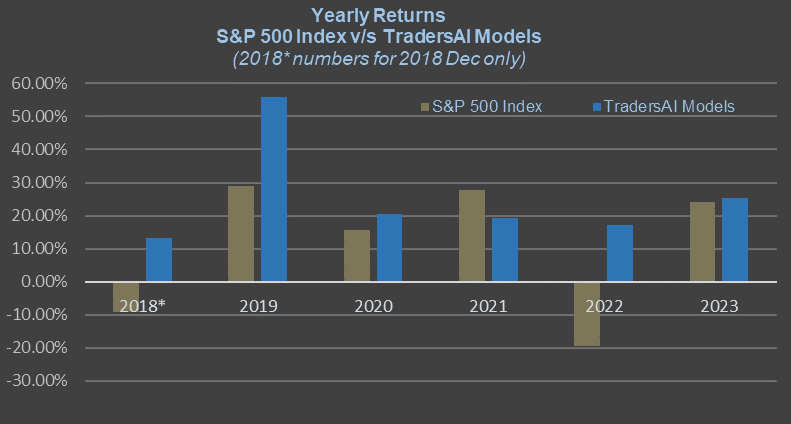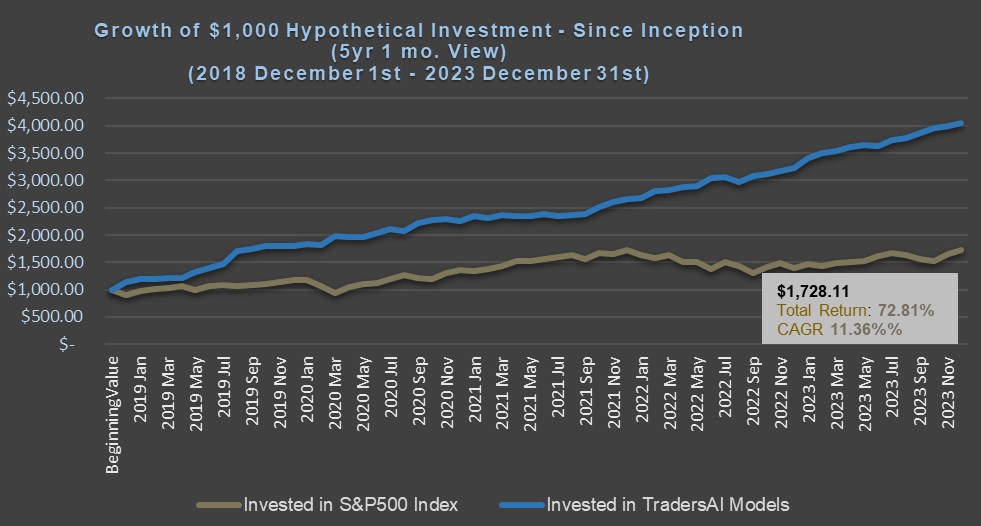Do You Call a 0.28 Point Gain A Santa “Rally”?!
Yes, listening to/watching fluffy market “analyses” can be injurious to your financial well being. Especially when the talkers/writers are NOT really talking about the results of their last talk/”analysis” and there is no way for you to evaluate or track the performance of their “analyses” or “forecasts”.
By now, our regular readers know that we are not here to pontificate or theorize about financial markets – we are here to share with actionable research findings with clear entry and exit levels for making investing/trading decisions. So, without further ado, let’s move on to objective analysis on what investing/trading opportunities, if any, in the S&P 500 Index our models indicate.
Trading Plans for THU, 12/27:
Medium-term/long-term Models
Our medium-term models started the month of December with indeterminate state and stayed out of the markets throughout the first half of the month.
Mon 12/17: Booked +20 points in profit on a short
Tue 12/18: Booked +9.25 points in profit on a short
Fri 12/21: No trades
Mon 12/24: No trades
Wed 12/26: Booked +14.75 points in profit on a short
Today’s Plan/Forecast: For today, Thursday 12/27, our medium-term models indicate the following trading plan – for the trades to trigger, the “breaks” should occur during the regular session hours (9:30am-4:00pm EST):
Models indicate going long on a break above 2455 level with a 10-point trailing stop, and going short on a break below 2395 with a 12-point trailing stop. The models also indicate an alternative trading plan which indicates going short on a break below 2450 from above with a 12-point trailing stop, and going long on a break above 2410 from below with a 10-point trailing stop.
Last Published Trading Plan/Forecast: Our last medium-term forecast stated: “For today, Wednesday 12/26, our medium-term models indicate potential deadcat bounce moves in the market. Models indicate going short on a break below 2375 level – if the index were to move up to test that level – with a 12-point trailing stop” (click here to read the full forecast and/or verify this claim).
Results/Outcome: Our 2375 was broken below around 9:45am EST, triggering the short position with a 12-point trailing stop. The index then reached an interim low of 2348.02 around 10:55am, taking the stop trigger to 2360.02 on the index level.
This stop was triggered in the next fifteen minutes (by 11:15am), closing the short at 2360.25 (accounting for the 0.25 tick level in the futures) with a profit of 14.75 points. The medium-term models stayed flat for the rest of the session.
Aggressive, Short-term, Intraday, or Professional Traders
Mon 12/10: Booked +31.25 points in profit on two shorts
Tue 12/11: Booked +0.50 points in profit on a long
Wed 12/12: No trades
Fri 12/14: Booked +14.25 points in profit on a short
Mon 12/17: Booked +51.75 points in profit on a short
Thu 12/20: Booked +26.5 points in profit on two shorts
Mon 12/24: Booked +50 points in profit on two shorts
Wed 12/26: Booked +9.25 points in profit on a long
Today’s Plan/Forecast: For today, Thursday 12/27, our aggressive, intraday models indicate going short on a break below 2420 with an 8-point trailing stop, and going long on a break above 2445 with a 10-point trailing stop. The models also point to an alternative plan as the flip of the last one: going long on a break above 2420 and going short on a break below 2445 (basically, using the 2420 and 2445 levels as the pivot points for trades).
For the trades to trigger, the breaks should occur during the regular session hours (9:30am-4:00pm EST).
Last Published Trading Plan/Forecast: Our last aggressive intraday models’ forecast stated: “For today, Wednesday 12/26, our aggressive, intraday models indicate going long on a break above 2390 with an 8-point trailing stop, and going short on a break below 2390 with a 10-point trail
ing stop” (click here to read the full forecast and/or verify this claim).
Model Biases/Outlook:
As we reiterated since the midterm elections, “this market is still likely going to be fraught with bull traps rather than bear traps – be cautious when buying into the spikes”.
With the historic and wild move up on Wednesday 12/26, our models now indicate the range of 2350-2485 as the broad levels the market is going to be trading within. For any medium-term directional bias to form, the index has to break out of that range.
IMPORTANT RISK DISCLOSURES AND NOTICES – READ CAREFULLY:
(ii) Do NOT make your financial investment or trading decisions based on this article; anyone doing so shall do so solely at their own risk. The author will NOT be responsible for any losses or loss of potential gains arising from any investments/trades made based on the opinions, forecasts or other information contained in this article.
(iii) Risk Warning: Investing, trading in S&P 500 Index – spot, futures, or options or in any other synthetic form – or its component stocks carries inherent risk of loss. Trading in leveraged instruments such as futures carries much higher risk of significant losses and you may lose more than you invested in them. Carefully consider your individual financial situation and investment objectives before investing in any financial instruments. If you are not a professional trader, consult a professional investment advisor before making your investment decisions.
(iv) Past performance: This article may contain references to past performance of hypothetical trades or past forecasts, which should NOT be taken as any representation or promise or guarantee of potential future profits. Past performance is not indicative of future performance.
(v) The author makes no representations whatsoever and assumes no responsibility as to the suitability, accuracy, completeness or validity of the information or the forecasts provided.
(vi) All opinions expressed herein are subject to change at any time, without any notice to anyone.





